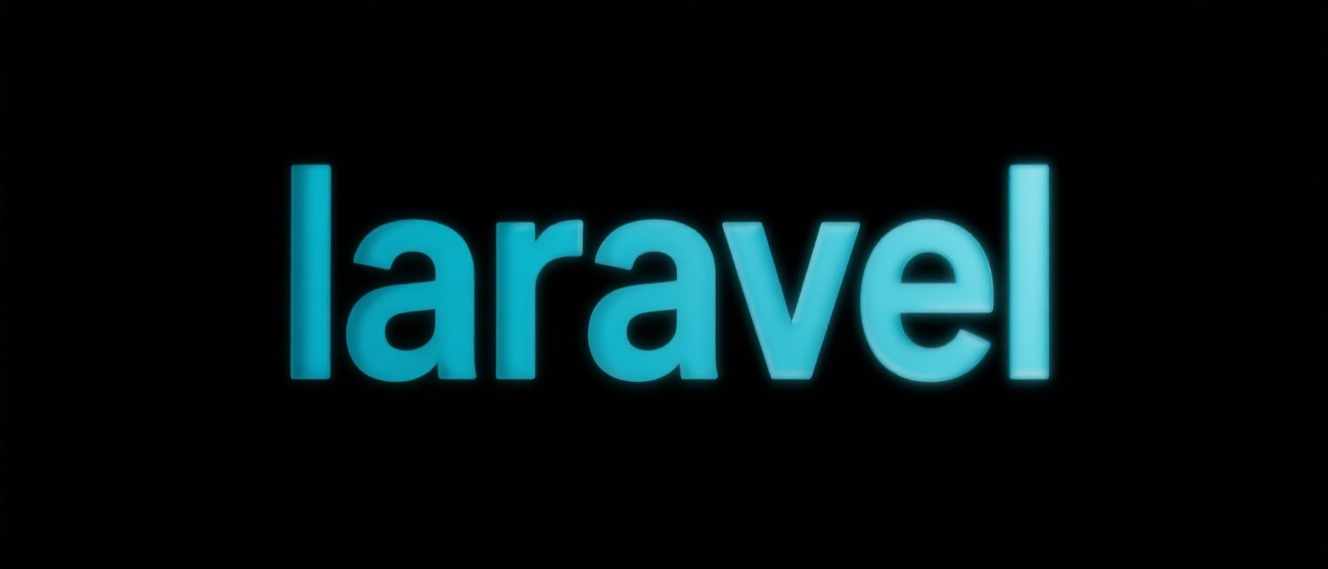To set up broadcasts with Laravel Echo, first configure Pusher as the broadcast driver, then install and initialize the Laravel Echo and Pusher JS libraries, then define broadcastable events in Laravel, then listen to these events on the front end, and finally pay attention to common problems. 1. Configure Pusher's credentials in the .env file and clear the configuration cache; 2. Install laravel-echo and pusher-js through npm and initialize Echo in the JS entry file; 3. Create an event class that implements the ShouldBroadcast interface and trigger events in the appropriate location; 4. Use Echo to listen to specified channels and events in the front-end; 5. Pay attention to common problems such as building tools, caches, Pusher connection status, and event triggering logic.

Yes, setting up broadcasting with Laravel Echo is pretty straightforward once you understand the flow. The main idea is to connect your Laravel backend with a WebSocket service (like Pusher or Socket.io) so your frontend can listen for real-time events.

Here's how to get it done step by step.

1. Set Up Broadcasting Driver
Laravel uses broadcasting drivers to push events over WebSockets. Pusher is one of the most common choices and works well with Laravel Echo out of the box.
What you need:

- A Pusher account
- Your app key, secret, and cluster from Pusher dashboard
In your .env file, update these values:
BROADCAST_DRIVER=pusher PUSHER_APP_ID=your-app-id PUSHER_APP_KEY=your-app-key PUSHER_APP_SECRET=your-app-secret PUSHER_APP_CLUSTER=mt1
Then run:
php artisan config:clear
This ensures Laravel picks up the new broadcast settings.
2. Install Laravel Echo and Pusher JS
You'll need Laravel Echo and Pusher's JavaScript library on the frontend.
Run this in your project root (assuming you're using npm):
npm install --save laravel-echo pusher-js
Then, initialize Echo in your resources/js/bootstrap.js or similar entry point:
import Echo from "laravel-echo";
window.Pusher = require('pusher-js');
window.Echo = new Echo({
broadcaster: 'pusher',
key: process.env.MIX_PUSHER_APP_KEY,
cluster: process.env.MIX_PUSHER_APP_CLUSTER,
encrypted: true
}); Make sure to expose those environment variables in .env.local or similar files if needed.
3. Broadcast Events in Laravel
Now that Echo is connected, you need to define which events should be broadcasted.
In your event class ( app/Events/SomeEvent.php ), make sure it implements ShouldBroadcast :
use Illuminate\Broadcasting\Channel;
use Illuminate\Contracts\Broadcasting\ShouldBroadcast;
class SomeEvent implements ShouldBroadcast
{
public function broadcastOn()
{
return new Channel('some-channel');
}
}Then fire the event somewhere in your code:
event(new SomeEvent());
Or use:
SomeEvent::dispatch();
If you're using queues, make sure your queue driver supports async broadcasting (like Redis or database).
4. Listen for Events in Frontend
Back in your JavaScript code, you can now listen for the event:
window.Echo.channel('some-channel')
.listen('SomeEvent', (e) => {
console.log(e);
});A few things to note here:
- Make sure the channel name matches exactly.
- The event name must match what's defined in your Laravel
broadcastAs()method (if you've customized it). - If you're not seeing events, double-check your Pusher credentials and event naming.
Also, if you're using private channels, use .private('channel-name') instead of .channel() .
5. Common Gotchas and Tips
Sometimes things don't work right away. Here are some common issues:
- ? You forget to run
npm run devor build after installing Echo — changes won't show up in the browser. - ? Mix versioning might cause old JS to load — try hard-refreshing or clearing cache.
- ? Pusher dashboard shows no connections — check if your Echo setup has the correct key and cluster.
- ? Event not firing? Make sure the event actually gets dispatched in your backend logic.
- ? For private or presence channels, you'll need to set up authentication routes and listeners properly.
That's basically it. Once everything is wired up, Laravel Echo makes real-time updates feel pretty seamless. It's not overly complex, but there are enough moving parts to trip over if you miss one.
The above is the detailed content of Setting up Broadcasting with Laravel Echo?. For more information, please follow other related articles on the PHP Chinese website!

Hot AI Tools

Undress AI Tool
Undress images for free

Undresser.AI Undress
AI-powered app for creating realistic nude photos

AI Clothes Remover
Online AI tool for removing clothes from photos.

Clothoff.io
AI clothes remover

Video Face Swap
Swap faces in any video effortlessly with our completely free AI face swap tool!

Hot Article

Hot Tools

Notepad++7.3.1
Easy-to-use and free code editor

SublimeText3 Chinese version
Chinese version, very easy to use

Zend Studio 13.0.1
Powerful PHP integrated development environment

Dreamweaver CS6
Visual web development tools

SublimeText3 Mac version
God-level code editing software (SublimeText3)

Hot Topics
 Creating Custom Validation Rules in a Laravel Project
Jul 04, 2025 am 01:03 AM
Creating Custom Validation Rules in a Laravel Project
Jul 04, 2025 am 01:03 AM
There are three ways to add custom validation rules in Laravel: using closures, Rule classes, and form requests. 1. Use closures to be suitable for lightweight verification, such as preventing the user name "admin"; 2. Create Rule classes (such as ValidUsernameRule) to make complex logic clearer and maintainable; 3. Integrate multiple rules in form requests and centrally manage verification logic. At the same time, you can set prompts through custom messages methods or incoming error message arrays to improve flexibility and maintainability.
 Adding multilingual support to a Laravel application
Jul 03, 2025 am 01:17 AM
Adding multilingual support to a Laravel application
Jul 03, 2025 am 01:17 AM
The core methods for Laravel applications to implement multilingual support include: setting language files, dynamic language switching, translation URL routing, and managing translation keys in Blade templates. First, organize the strings of each language in the corresponding folders (such as en, es, fr) in the /resources/lang directory, and define the translation content by returning the associative array; 2. Translate the key value through the \_\_() helper function call, and use App::setLocale() to combine session or routing parameters to realize language switching; 3. For translation URLs, paths can be defined for different languages ??through prefixed routing groups, or route alias in language files dynamically mapped; 4. Keep the translation keys concise and
 Working with pivot tables in Laravel Many-to-Many relationships
Jul 07, 2025 am 01:06 AM
Working with pivot tables in Laravel Many-to-Many relationships
Jul 07, 2025 am 01:06 AM
ToworkeffectivelywithpivottablesinLaravel,firstaccesspivotdatausingwithPivot()orwithTimestamps(),thenupdateentrieswithupdateExistingPivot(),managerelationshipsviadetach()andsync(),andusecustompivotmodelswhenneeded.1.UsewithPivot()toincludespecificcol
 Sending different types of notifications with Laravel
Jul 06, 2025 am 12:52 AM
Sending different types of notifications with Laravel
Jul 06, 2025 am 12:52 AM
Laravelprovidesacleanandflexiblewaytosendnotificationsviamultiplechannelslikeemail,SMS,in-appalerts,andpushnotifications.Youdefinenotificationchannelsinthevia()methodofanotificationclass,andimplementspecificmethodsliketoMail(),toDatabase(),ortoVonage
 Strategies for optimizing Laravel application performance
Jul 09, 2025 am 03:00 AM
Strategies for optimizing Laravel application performance
Jul 09, 2025 am 03:00 AM
Laravel performance optimization can improve application efficiency through four core directions. 1. Use the cache mechanism to reduce duplicate queries, store infrequently changing data through Cache::remember() and other methods to reduce database access frequency; 2. Optimize database from the model to query statements, avoid N 1 queries, specifying field queries, adding indexes, paging processing and reading and writing separation, and reduce bottlenecks; 3. Use time-consuming operations such as email sending and file exporting to queue asynchronous processing, use Supervisor to manage workers and set up retry mechanisms; 4. Use middleware and service providers reasonably to avoid complex logic and unnecessary initialization code, and delay loading of services to improve startup efficiency.
 Understanding and creating custom Service Providers in Laravel
Jul 03, 2025 am 01:35 AM
Understanding and creating custom Service Providers in Laravel
Jul 03, 2025 am 01:35 AM
ServiceProvider is the core mechanism used in the Laravel framework for registering services and initializing logic. You can create a custom ServiceProvider through the Artisan command; 1. The register method is used to bind services, register singletons, set aliases, etc., and other services that have not yet been loaded cannot be called; 2. The boot method runs after all services are registered and is used to register event listeners, view synthesizers, middleware and other logic that depends on other services; common uses include binding interfaces and implementations, registering Facades, loading configurations, registering command-line instructions and view components; it is recommended to centralize relevant bindings to a ServiceProvider to manage, and pay attention to registration
 Understanding Dependency Injection in Laravel?
Jul 05, 2025 am 02:01 AM
Understanding Dependency Injection in Laravel?
Jul 05, 2025 am 02:01 AM
Dependency injection automatically handles class dependencies through service containers in Laravel without manual new objects. Its core is constructor injection and method injection, such as automatically passing in the Request instance in the controller. Laravel parses dependencies through type prompts and recursively creates the required objects. The binding interface and implementation can be used by the service provider to use the bind method, or singleton to bind a singleton. When using it, you need to ensure type prompts, avoid constructor complications, use context bindings with caution, and understand automatic parsing rules. Mastering these can improve code flexibility and maintenance.
 Managing database state for testing in Laravel
Jul 13, 2025 am 03:08 AM
Managing database state for testing in Laravel
Jul 13, 2025 am 03:08 AM
Methods to manage database state in Laravel tests include using RefreshDatabase, selective seeding of data, careful use of transactions, and manual cleaning if necessary. 1. Use RefreshDatabasetrait to automatically migrate the database structure to ensure that each test is based on a clean database; 2. Use specific seeds to fill the necessary data and generate dynamic data in combination with the model factory; 3. Use DatabaseTransactionstrait to roll back the test changes, but pay attention to its limitations; 4. Manually truncate the table or reseed the database when it cannot be automatically cleaned. These methods are flexibly selected according to the type of test and environment to ensure the reliability and efficiency of the test.






